Super Dam: Egyptian Concern for Nile Water Security Spurs Cooperation Over Ethiopia’s New Dam
The dust of Egypt’s leadership transition has barely begun to settle, and already the new government is working to forestall any loss in supply or access to the Nile’s waters. Meanwhile, Ethiopia continues upstream with one of the largest hydropower projects in the world.
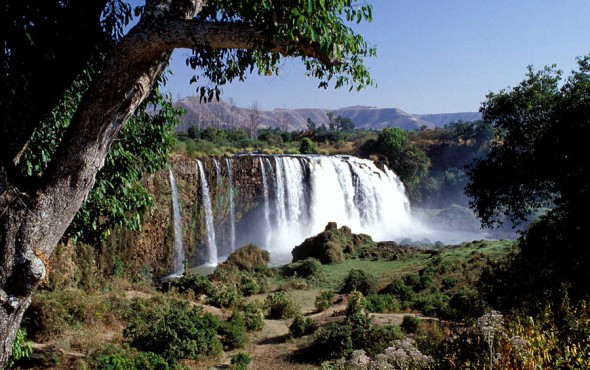
By Joanne Yao
Circle of Blue
Despite ongoing violence with a casualty count in the hundreds, the Egyptian interim government continues to press Ethiopia to meet and discuss a controversial new dam that is under construction along the upper Nile River. Egypt sees the talks as an essential first step to prevent any loss to the river’s water, which Egyptians regard as their most precious natural resource. Successful talks with its neighbors, Egypt hopes, will also restore Egypt’s membership to the Africa Union and reestablish Egypt as a key player in African politics.
“We will take action to guarantee the water security of Egypt and preserve our rights in the waters of the Nile,” said Egyptian foreign minister Nabil Fahmy at a press conference in Cairo on July 20, only four days after the military-backed interim government assumed office. “We call on the Ethiopian side to respond.”
The message to Ethiopia reflects just how concerned Egypt’s top leaders are about the Grand Ethiopian Renaissance Dam (GERD), one of the largest hydropower projects in the world — and Egypt has been persistent with its urgent message. Egypt’s pleas, however, have received a lukewarm response. For the third time since June, Ethiopia and Sudan have postponed a meeting with Egypt to discuss the consequences of the GERD, despite a general agreement that a solution to satisfy all parties must be reached, reported Egypt’s Al-Monitor newspaper on September 10.
Ethiopia’s massive dam project — under construction since 2011 and slated for completion in 2017 — holds sway over the hydrological fortunes of three countries and more than 200 million people. A desert country, Egypt relies on the Nile for roughly 95 percent of its water supply and has always worried about the loss of even a fraction of the river’s flow. Egyptian authorities fear that the GERD will diminish the amount of water that flows into Egypt.
On the other hand, Ethiopia views the dam as essential to its political and economic development, comparing the GERD to the Hoover Dam, which helped to lead the United States out of the Great Depression of the 1930s and presented to the world a vision of America’s enormous possibilities. One of the great engineering achievements of the 20th century, over 29 million people today rely on the 2,080-megawatt concrete dam along the Colorado River in the American West. The generating capacity of the GERD, however, is almost three times larger than that of the Hoover Dam — a telling demonstration of the scale of modern hydropower construction in Africa, and globally, as well as the potential to dramatically alter river flows and diplomatic relationships.
The contest between Egypt and Ethiopia over the Nile is one of a growing number of globally significant choke points that involve water resources that flow across national borders; the desire of developing countries to build dams that harness water for both power generation and agriculture; and changing climatic conditions that are altering stream flows and water supplies that feed the rivers of the developing world during an era of rapid population and economic growth. Similar choke points are emerging in the Tigris-Euphrates River System that flows through Turkey, Syria, and Iraq, for example, and the Indus River Basin that joins India and Pakistan.
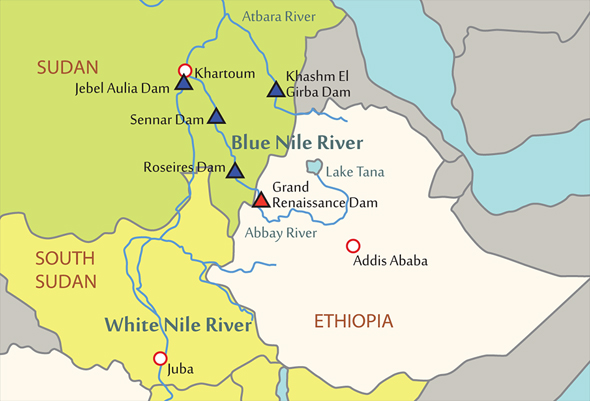
Egypt’s goal in seeking negotiations is to work with Ethiopia to reach a feasible consensus on how to manage the changing hydrological balance. But in doing so, the two nations are also pursuing a diplomatic strategy, designed to manage disagreements and ease tensions, which could demonstrate how shared river resources have the potential to foster cooperation rather than confrontation.
Boon Or Burden?
Ancient Greek historian Herodotus mused that Egypt was a gift to the world from the Nile, its annual floods creating the vast agricultural bounty that has sustained one of the longest lasting civilizations in history. What was true in the time of Herodotus continues today: without the Nile, Egypt dies — 97 percent of Egypt’s 84 million people live on 3 percent of the country’s land, a thin strip of fertile oasis along the Nile.
–Lori Pottinger, International Rivers
The construction site for the GERD is located on the Blue Nile, almost 3,200 kilometers (2,000 miles) upstream from Cairo. A major tributary of the Nile River, the Blue Nile starts in Lake Tana at an elevation of 1,800 meters (6,000 feet) in the Ethiopian highlands. Flowing south and then west, the deep-hued river meanders along rugged canyons until it reaches Ethiopia’s western border with Sudan.
The GERD is located just 50 kilometers (30 miles) from the Ethiopia-Sudan border in East Africa’s Great Rift Valley, a verdant region where the oldest human ancestors originated more than 2 million years ago. Roughly 1,000 kilometers (600 miles) further downstream, the Blue Nile meets the White Nile at Khartoum, Sudan’s capital, and flows north through Egypt for 1,400 kilometers (870 miles) before draining into the Mediterranean Sea.
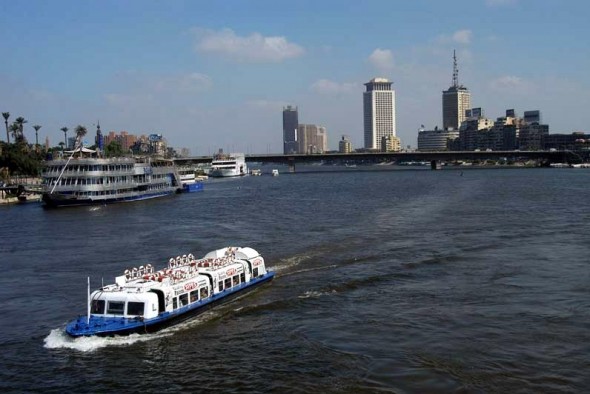
Since 2011, Ethiopia has been building the concrete GERD, which will have a generating capacity of 5,000 to 6,000 megawatts, almost double the capacity of the largest dam currently in operation along the Nile, Egypt’s Aswan High Dam. Moreover, once completed in 2017, the GERD will be the largest dam in Africa.
The dam’s six-year construction is estimated to cost between 79 and 94 billion Ethiopian Birr ($US 4.2 and $US 5 billion), or almost Ethiopia’s entire expected annual revenue for the 2012-2013 fiscal year. With the exception of 19 billion Ethiopian Birr ($US 1 billion) from China to install transmission lines from the hydropower plant to the capital, Ethiopia has not secured any international financing for its ambitious project. The political, economic, and environmental risks of the project are just too big.
“Most international donors have standards for development projects that greatly exceed Ethiopia’s,” Lori Pottinger told Circle of Blue. Pottinger works in the Africa program for International Rivers, a nonprofit advocacy organization located in Berkeley, California, that is known for their campaigns against large dams around the world. “The GERD project started without an environmental and social assessment, without proper involvement of neighbors who share the river, without an understanding of the project’s economic costs and benefits.”
Still, Ethiopian authorities contend that the GERD will have little effect on the amount of water reaching Egypt and Sudan, assuring downstream countries that water in the dam’s reservoir will not be used for irrigation. Ethiopian scholars at a June 29 symposium also said that the dam will reduce sedimentation along the Blue Nile, saving its neighbor Sudan $US 20 million a year in cleanup costs. In addition, Ethiopia emphasizes that the dam will generate enough electricity to export to its neighbors.
Despite Ethiopia’s insistence that the dam will be a boon to the entire region, Egypt remains unconvinced that such ambitious plans will not change or alter the Nile’s flow.
The dam’s reservoir is expected to hold 62 billion to 74 billion cubic meters (16.4 trillion to 19 trillion gallons) of water. The regulated release of water from the reservoir will then drive the dam’s turbines to generate electricity. Egypt’s scientists maintain that the Nile’s flow will necessarily diminish in order to fill the reservoir in the years following the dam’s completion. In addition, evaporation from the reservoir could reduce the river’s water supply by as much as 3 billion cubic meters (792 billion gallons) each year.
To put the numbers in perspective, however, the reservoir behind Egypt’s Aswan High Dam holds 168.9 billion cubic meters (44.6 trillion gallons), more than twice the GERD’s proposed reservoir, and has an estimated annual evaporation loss of 12 billion cubic meters (3.2 trillion gallons) each year.
Potential For Water Conflict
With the exception of the Nile, water is scarce in arid North Africa. Since 1997, the 10 countries of the Nile River Basin have been negotiating a workable framework to share in the use of the Nile’s waters. In 2010, upstream countries Ethiopia, Kenya, Rwanda, Tanzania, and Uganda signed the Cooperative Framework Agreement of the Nile Basin, known as the “Entebbe Agreement.” Burundi signed a year later, and the Democratic Republic of Congo and South Sudan — which became a nation in 2011 — recently expressed their intention to sign, as well.
Egypt and Sudan have stated that they will not sign the agreement without modifications to a key article in the agreement. However, both countries participate in the Nile Basin Initiative, a platform to discuss cooperation along the Nile that was established in 1999. Still, disagreements over water rights continue along the Nile.
For instance, when there was a temporary diversion in June for the construction of the dam, then-president Mohamed Morsi felt so strongly as to imply that Egyptians were ready to fight, if necessary, for their right to water. Borrowing from an old Egyptian song, Morsi said that if Nile water “diminishes by one drop, then our blood is the alternative.”
Upstream countries, however, maintain that the Nile’s waters are their birthright too.
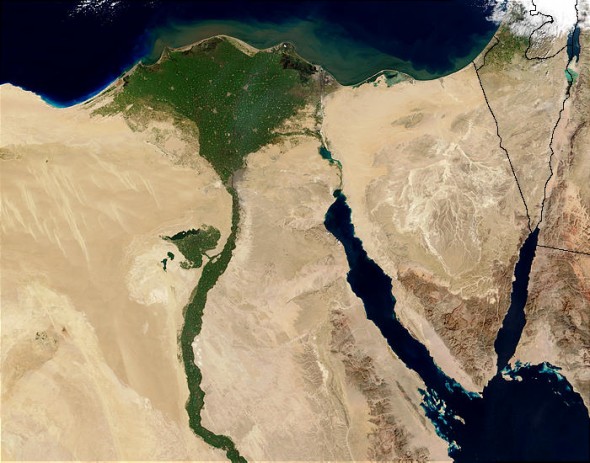
In a June press conference, Sudanese government spokesmen Ahmed Bilal Osman stressed that Sudan supports the GERD project and downplayed the dam’s potential negative effects. This came after Sudanese President Omar Al-Bashir had declared his support of the project in March 2012.
“No African wants to hurt Egypt. However, Egypt cannot continue to hurt black Africa and the countries of the tropics of Africa,” said Uganda President Yoweri Museveni in response to Morsi’s provocative statement Museveni also voiced his support for the GERD project.
Potential For Water Cooperation
Information on Nile flows and historical agreements is rife with misinterpretations and misunderstandings — information which is commonly misreported in the media, according to David Grey, professor at Oxford University’s School of Geography and the Environment. Incorrect numbers and historical facts can fan the flames of dispute.
–David Grey, professor at Oxford University
School of Geography & the Environment
“The lack of shared knowledge undoubtedly creates misunderstandings, which creates mistrust and fear — and fear creates unstable political relationships,” Grey told Circle of Blue. Rather, Grey suggests, if the countries work together to identify development opportunities, including agreeing on operating rules for filling and managing the new GERD and any other future dams, this would minimize the harm and maximize the benefits for all.
That approach, it turns out, has led to successful water-sharing compacts and treaties for centuries. Aaron Wolf, a geographer and transboundary water expert at Oregon State University’s Institute for Water and Watersheds, has analyzed the history of international water negotiations. In a 2001 article, Wolf stressed that there have been 3,600 treaties of cooperation since 805 CE. For modern times, Wolf found that, of the 1,831 reported water-related international incidents, confrontations, and encounters that had occurred between 1950 and 2000, two-thirds had reached cooperative conclusions.
“When you look back at history, you see that people have always talked about a fear of water causing war. But in the end, it leads to very little violence at the international scale,” Wolf said in a July interview with the Intelligent Optimist.
Even in hotly contested watersheds, where water scarcity pushes parties towards conflict, cooperation remains a real possibility. Ethiopia’s Ambassador to Egypt, Mahmoud Drir, told the Xinhua News Agency in July that the concern over GERD can be resolved.
“Mutual interests between the two states connect their future, and the minor issues that rise sometimes cannot affect their relations,” he said. “The dam could be a win-win solution. The future and destiny of both Ethiopia and Egypt are intertwined by strong, inseparable, historical bonds.”
Can Water Wealth End Poverty?
In recent decades, Ethiopians suffered unspeakable famine and war. As of 2012, 5 million people in Ethiopia suffer from chronic food insecurity. Civil war raged inside Ethiopia for almost two decades, from 1974 to 1991, and the two-year Eritrean-Ethiopian War in the late 1990s caused up to 70,000 deaths. One of the poorest nations in Africa, Ethiopia has a gross per capita income of $US 410, according to 2012 World Bank figures. Moreover, the United Nations’ Human Development Index ranks Ethiopia 173rd out of 187 countries.
This history helps explain why Ethiopia views the Nile’s falling waters — a readily visible and plentiful energy resource — and the GERD as essential to its national development in the coming decades.
Ethiopia is known as the water tower of Africa, with rainfall accumulating in the Ethiopian highlands at more than 4,000 meters (13,120 feet) above sea level and then flowing down to the plains. The Ethiopian government aims to turn this storage of waterborne energy into electricity through a host of hydropower projects — more than 15 completed or planned projects across the country and four others on the Blue Nile, in addition to the GERD.
“Social development is strictly tied to energy and electricity supply,” Asfaw Beyene told Circle of Blue. Beyene is a professor of mechanical engineering at San Diego State University and has written extensively on the GERD. “The alternative would be a more expensive, dirtier fossil fuel plant. Or a much more risky nuclear energy [plant].”
But the path from natural potential to economic prosperity is not smooth, and there are big reasons for those at the local and international levels to be concerned. Droughts and climate change could lessen the Nile’s flow or alter its course. Earthquakes are common in the seismically active Great Rift Valley and could damage the structure. These physical forces — in addition to regional political frictions over the Nile — could threaten how much electricity the GERD will be able to generate.
And even if Ethiopia’s GERD project is successful, experts argue, economic prosperity does not necessarily follow.
“Dams are a means to an end, not an end in themselves,” noted a November 2000 report from the World Commission on Dams. In other words, to end poverty and advance economic development, Ethiopia may need to make other policy choices and invest in good governance, education, and public health.
“In the global south, where nearly all new dams are being built, large dams are usually put forth as being something of a silver bullet for solving a host of poverty-related problems,” International Rivers’ Pottinger said. “In reality, most of the world’s billion people without electricity will never be the beneficiaries of large dams. Smaller, more decentralized systems — designed with the needs of the rural poor in mind — would be a better fit in much of Ethiopia.”
Joanne (Yuan) Yao, a PhD student in International Relations at the London School of Economics (LSE), is currently reporting for the Circle of Blue news desk. She holds degrees from the University of Chicago and Johns Hopkins SAIS. Her dissertation focuses on cooperative institutions that govern transboundary rivers. Infographic by Codi Yeager-Kozacek, Circle of Blue’s Hawaii-based reporter. Norbert Schiller contributed photographs.
Circle of Blue provides relevant, reliable, and actionable on-the-ground information about the world’s resource crises.

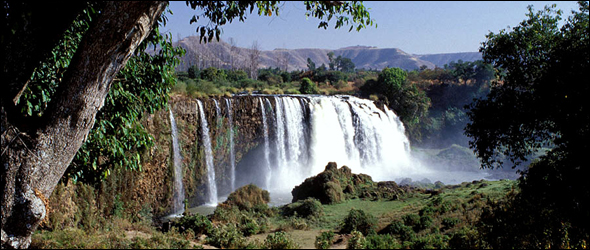
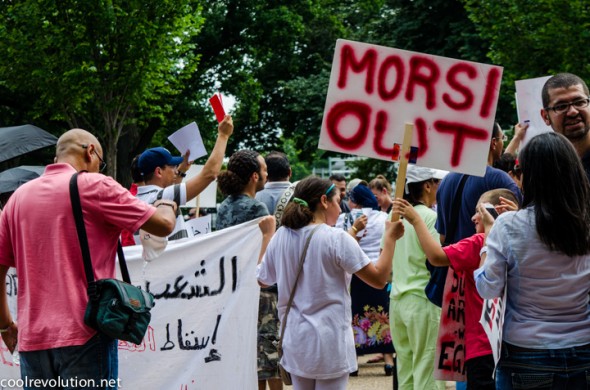
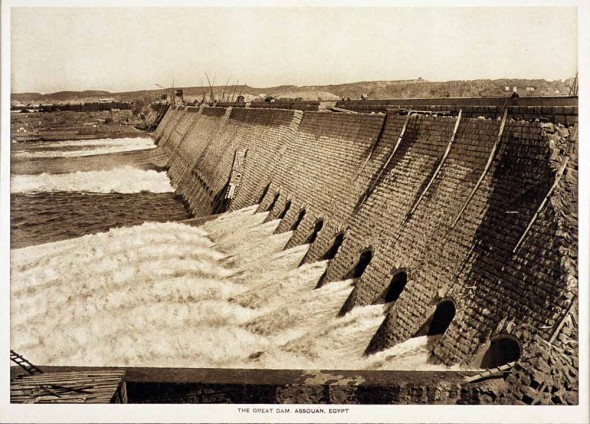
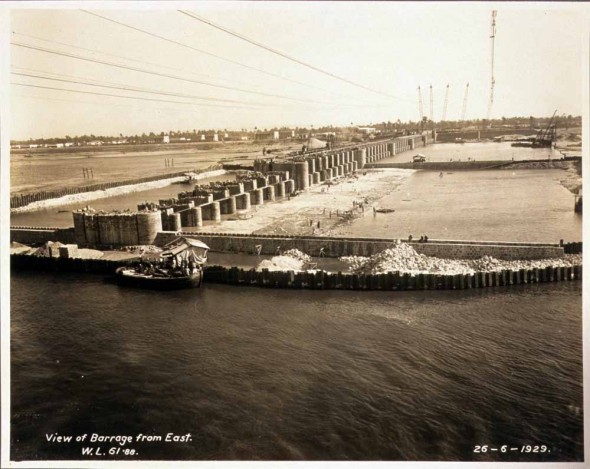
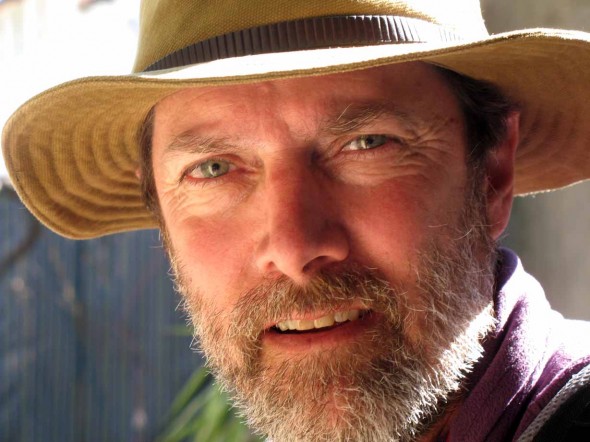
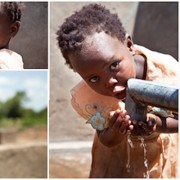
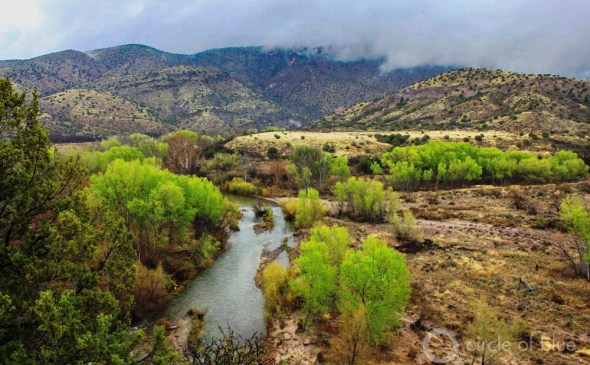
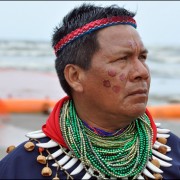
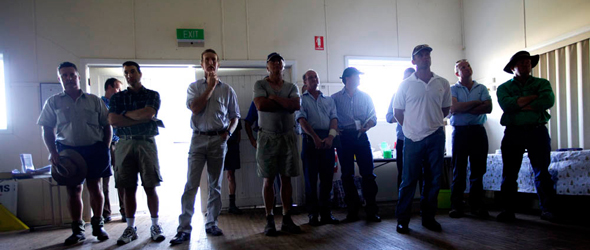
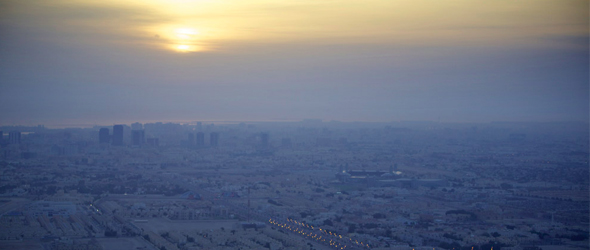
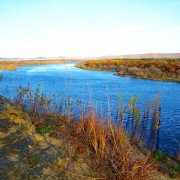


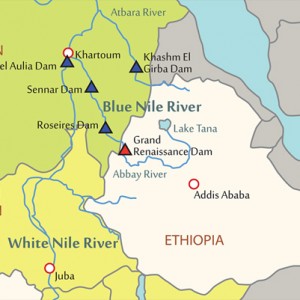
Well, fairly written. The only way forward is cooperation between the countries on how to use the common natural resources for the benefit of all. There will be no way that a single country will forever dictate the use of the river for the source countries. One big mistake done by the writer of the article is lack of geographic knowledge of the great East African Rift Valley, which lies several hundred kilometers east of the location where GRED is being built.
Ethiopia was not consulted when Aswan Dam was constructed. Moreover, Ethiopia is not part of the 1929 and 1959 Colonial Agreement. Egyptian by themselves spoiled the good relation by Arming Eritrea separatists; in the end, Ethiopia lost its port. Now, this pushes Ethiopia to use Nile River to compensate for the ports. If Egyptian swill continue to harm Ethiopia, Ethiopia is further pushing to use all tributaries of Nile River. I hope Egyptians learn from their mistakes and cooperate on mutual benefit of Nile River for all African countries.
What I like to remind readers of this article is Egypt has been sponsoring several wars against Ethiopia. Somalia was once supported by Egypt to wage war against Ethiopia. It was a full-blown out war for 2 years. Many lives was lost. Egypt with Sudan was supporting the northern rebel movement. They transform them from bandit to liberation front and, as a result, a war which lasted for 30 years war was created. Eritrea became independent and took all the border territory making Ethiopia land-locked. Egypt believed and still believes that keeping Ethiopia and other black African nations, busy with war and political instability, will guarantee the full ownership of the river. Egypt also supported the removal of the popular Sudan leader to replace him with military government in the 1950s.
With this background, it will be difficult for the Black African nations, including Sudan, to believe Egypt is a decent nation.
Although Egypt is known to have shortage of water, its attempts to divert the Nile water to Sinna desert, and even inviting the state of Israel to have a share of the River Nile, does not create trust and respect. Egypt has been only engaged in one thing. Bullying and threatening African nations and supporting financially and materially all opposition figures in the Black African nations. If any European nation behaved in the way Egypt behaves towards Africa, there would have been a lot of curse and scream. In my opinion, any damage done to any African nations, whether it is done by European or non-European, it should be condemned and action should be taken.
The solution is, I believe, for the rest of the African nations to implement the equitable use of water and to cooperate with one another. Egypt, if it can become humble enough to partner with other nations, will be welcomed at any future date.
Let Africa be united and work together.
Agree this is a much better article than the one I saw on NG. This issue has so many angles with people committed to only their side of the story it makes it contentious. For some clarity please look at timeline visualization of the dispute at http://www.timelineethiopia.com/1/post/2013/06/nile-dispute-timeline.html and the basic data about the Nile Basin countries at http://www.timelineethiopia.com/1/post/2013/06/access-to-electricity-vs-total-fresh-water-withdrawals.html and http://www.timelineethiopia.com/1/post/2013/06/nile-basin-countrys-gdp-population-andhydroelectric-power-production.html
Hope that helps give some additional perspective
For a journalist, why don’t you do proper research and present an objective view. The historicals about the file and Egypt-Ethiopia relations are massaged to make all nice. The fact of the matter is the Nile comes from Ethiopia. It’s our river and our natural right to use our water for our people. We don’t need your patronizing assessment of Africa’s growth or how we should run our country. If you were that objective, why don’t you try to assess the cost-benefit of the Aswan Dam or the Sudan dams. Evaporation or not, lose or not, Ethiopia will use the water. Good thing that we only need the Nile for electricity, but what would you have said if we diverted the tributaries to feed our people? Do you think Ethiopian lives are any less valuable or important? We will use every resource within our boarder. This is supported by all international laws and river-sharing guidelines. Egypt will lose water. That is a fact. But it would be much less than what they lose on evaporation. Why let it evaporate? That is called in efficient use of water. Dams should not be in areas where temp is 120 degree, it should be in places like Ethiopia where temp is mostly 70-80. Shame you quote Lori. She is one biased fake journalist who will say anything to get paso. She is anti-Africa.
The GERD is inevitable. Egypt will have to come to terms with that and actually think positively to turn this into a win/win situation. Ethiopia still needs Egypt’s consent, even if just to secure funding for the project.
I have been reading the above comments, and I couldn’t agree more on the issue. Egypt has been a constant nuisance on Ethiopia and other Black Africa nations. I was educated by Egyptian professors, and I remember one of our teachers, who was a parasitologist, said in a classroom, “If you build a dam on the Nile, you are going to keep all your snails inside Ethiopia.” (Snails are a major cause of Schistosomiasis.) That was back in 1999, and I still remember it till today. Well, I say to him now, “Professor, let me keep my snails and my water.”